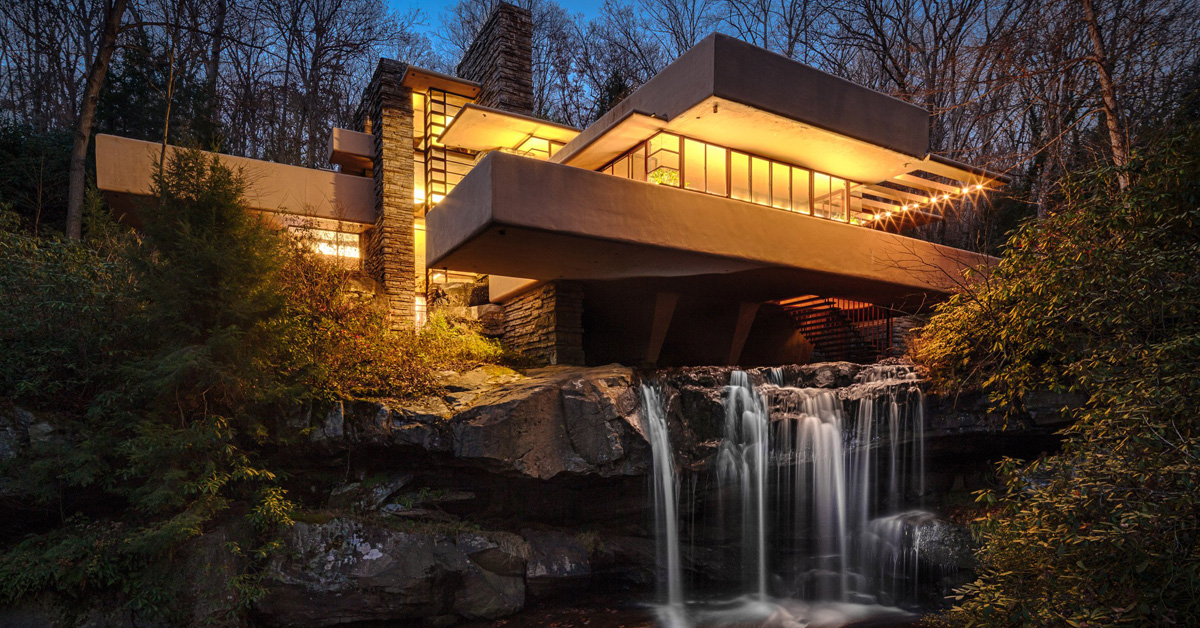- Home
- Articles
- Architectural Portfolio
- Architectral Presentation
- Inspirational Stories
- Architecture News
- Visualization
- BIM Industry
- Facade Design
- Parametric Design
- Career
- Landscape Architecture
- Construction
- Artificial Intelligence
- Sketching
- Design Softwares
- Diagrams
- Writing
- Architectural Tips
- Sustainability
- Courses
- Concept
- Technology
- History & Heritage
- Future of Architecture
- Guides & How-To
- Art & Culture
- Projects
- Interior Design
- Competitions
- Jobs
- Store
- Tools
- More
- Home
- Articles
- Architectural Portfolio
- Architectral Presentation
- Inspirational Stories
- Architecture News
- Visualization
- BIM Industry
- Facade Design
- Parametric Design
- Career
- Landscape Architecture
- Construction
- Artificial Intelligence
- Sketching
- Design Softwares
- Diagrams
- Writing
- Architectural Tips
- Sustainability
- Courses
- Concept
- Technology
- History & Heritage
- Future of Architecture
- Guides & How-To
- Art & Culture
- Projects
- Interior Design
- Competitions
- Jobs
- Store
- Tools
- More
Frank Lloyd Wright Architectural Career: Innovations That Shaped Modern Design
Discover the extraordinary architectural journey of Frank Lloyd Wright, the visionary behind organic architecture. Explore his iconic works like Fallingwater and the Guggenheim Museum, his philosophy of blending design with nature, and the legacy that redefined modern architecture despite personal and professional challenges. A tribute to a timeless innovator who reshaped design forever.

Frank Lloyd Wright’s name is synonymous with innovation in architecture. As one of the most influential architects of the 20th century, his career reshaped how we think about design and our connection to the spaces we inhabit. From his groundbreaking Prairie-style homes to iconic structures like Fallingwater, Wright’s work continues to inspire architects and design enthusiasts alike.
What sets Wright apart is his ability to seamlessly blend form and function, creating designs that feel both timeless and deeply connected to their environment. His philosophy of organic architecture wasn’t just about aesthetics—it was a way of life, emphasizing harmony between human-made structures and the natural world. As we explore his architectural journey, we uncover how his vision transformed modern design and left an indelible mark on the world.
Table of Contents
ToggleEarly Life And Influences
Frank Lloyd Wright was born on June 8, 1867, in Richland Center, Wisconsin, into a family that fostered creativity and intellectual curiosity. His mother, Anna Lloyd Jones, introduced him to architecture early by decorating his childhood room with illustrations of English cathedrals. She envisioned him becoming an architect before he even entered school.
Wright’s father, William Cary Wright, was a preacher and musician, exposing him to disciplines that demanded precision and creative expression. Their separation in 1885 left Wright financially responsible for his education, instilling a strong drive for independence.
During his teenage years, growing up in rural Wisconsin deeply influenced his appreciation for natural landscapes. These experiences shaped his philosophy of organic architecture, emphasizing harmony between buildings and their environments.
Wright worked for prominent architecture firms, including Adler & Sullivan, in Chicago from 1887, where he became Louis Sullivan’s apprentice. Sullivan’s principles, especially “form follows function,” significantly impacted Wright’s approach to design.

Key Milestones In Frank Lloyd Wright’s Architectural Career
Frank Lloyd Wright’s career spanned over seven decades, during which he revolutionized modern architecture. Key milestones highlight his contributions to innovative design and architectural philosophies.
Founding The Prairie School Movement
Wright established the Prairie School in the early 1900s, emphasizing horizontal lines, open floor plans, and integration with the landscape. His design for the Robie House (1910) in Chicago is a defining example of this style. The movement’s principles mirrored his philosophy of organic architecture, aiming to create harmony between buildings and their natural surroundings.
Designing The Iconic Fallingwater
Wright designed Fallingwater in 1935 as a weekend retreat for the Kaufmann family in Pennsylvania. The structure, dramatically cantilevered over a waterfall, became an architectural masterpiece. It exemplifies his ability to blend man-made structures with nature by incorporating bold, geometric forms and materials like stone and concrete sourced from the nearby environment.
The Development Of Usonian Homes
In the 1930s, Wright introduced Usonian homes as affordable, functional housing options for middle-class Americans. These single-story dwellings featured open interiors, flat roofs, and built-in furniture to maximize efficiency. The Jacobs House in Madison, Wisconsin (1937), marked the first Usonian home and demonstrated his commitment to accessible, well-designed living spaces.

Notable Architectural Styles And Contributions
Frank Lloyd Wright’s work consistently reflected his groundbreaking approach to blending architecture with nature. His designs emphasized harmony, innovation, and a deep understanding of their surroundings.
Organic Architecture Philosophy
Wright prioritized creating structures that felt integral to their environments. Organic architecture aimed to unify the building, its site, and its inhabitants. Fallingwater (1935), which appears to emerge from a rocky hillside over a stream, exemplifies this idea. He often employed natural materials like stone, wood, and glass to emphasize this connection.
Wright also believed in fluid interior spaces. Open floor plans and blurred boundaries between indoor and outdoor spaces, seen in his Usonian homes, demonstrate his dedication to crafting environments that align with human needs and natural settings.
Innovations In Material Usage
Wright’s designs featured pioneering use of materials to enhance aesthetics and functionality. Reinforced concrete, used in structures like the Guggenheim Museum, allowed for curved forms and open spaces. He incorporated glass expansively, creating uninterrupted views and natural illumination.
We also see innovations in his textile block system, used in homes like the Ennis House (1924). This technique combined modular concrete blocks with intricate patterns for both structural strength and decorative appeal. Each choice demonstrated his commitment to balancing modern techniques with timeless beauty.
Integration With The Environment
Wright’s integration of structures into their landscapes remained central to his architectural philosophy. He positioned buildings to blend with natural contours, avoiding disruption to the environment. Taliesin West (1937), his Arizona home and studio, integrates desert rock and sand for seamless harmony with its surroundings.
He used cantilevering methods, particularly in Fallingwater, to achieve structural balance while preserving site authenticity. These design principles ensured his buildings complement rather than compete with nature.

Challenges And Controversies
Frank Lloyd Wright’s architectural career was marked by groundbreaking achievements, but it also faced several personal and professional hurdles. His innovative methods and unorthodox style often attracted criticism and controversy.
Personal And Professional Struggles
Wright experienced financial instability, particularly during the Great Depression when commissions for architectural projects declined. Despite his fame, maintaining a consistent income was challenging due to his ambitious projects and lavish lifestyle. His personal life added to these struggles, as his tumultuous relationships—including a highly publicized divorce from his first wife, Catherine Tobin—often overshadowed his career. The tragic 1914 fire at Taliesin, his home and studio, further exemplified the adversities he faced. This event, involving the murder of several people by a disgruntled employee, was a significant emotional and professional setback during his early career.
Criticisms Of His Architectural Methods
Wright’s architectural philosophy, though visionary, was not universally celebrated. Critics often regarded his emphasis on form and aesthetics as impractical, particularly in terms of functionality and maintenance. Reports of structural issues, such as leakage in Fallingwater and cracking in Usonian homes, fueled skepticism about his designs’ long-term durability. Additionally, some peers accused Wright of prioritizing his artistic vision over clients’ practical needs, leading to strained relations with patrons. His rejection of traditional architectural norms and his unyielding belief in his methods occasionally alienated collaborators within the broader architectural community.
Legacy Of Frank Lloyd Wright
Frank Lloyd Wright’s impact resonates across generations of architects and designers. His philosophy and innovative techniques continue to shape modern architecture and inspire efforts for preservation.

Influence On Modern Architecture
Wright redefined architectural design by emphasizing harmony with the environment. His principles of organic architecture influenced contemporary architects like Zaha Hadid and Richard Meier, who integrate natural forms and materials into their projects. Many design elements, such as open floor plans and the seamless flow between indoor and outdoor spaces, stem from Wright’s ideas. Iconic landmarks like Fallingwater and the Guggenheim Museum set benchmarks for innovative use of materials and spatial design.
Wright’s legacy extends to urban planning, including his concept for Broadacre City, showcasing his vision for decentralized, nature-centric communities. His approach to integrating technology with traditional craftsmanship remains a cornerstone for sustainable design practices today.
Preservation Of Wright’s Buildings
Efforts to preserve Wright’s work underscore its historical and cultural importance. The Frank Lloyd Wright Foundation, established in 1940, safeguards his archives, promotes research, and supports restoration projects. In 2019, eight of Wright’s masterpieces, including Fallingwater and the Hollyhock House, received UNESCO World Heritage Site status, highlighting their global significance.
Preservation challenges arise due to material aging and environmental exposure. Restoration initiatives, such as the meticulous conservation of Taliesin West, protect these architectural gems for future generations while maintaining Wright’s original vision and design intent. Wright’s enduring influence ensures continued dedication to preserving his contributions.
Conclusion
Frank Lloyd Wright’s architectural career stands as a testament to innovation and artistic vision. His integration of form, function, and nature redefined architectural practices, influencing countless modern designs. From the horizontal lines of Prairie-style homes like the Robie House to the seamless natural harmony in Fallingwater, his creations exemplify his philosophy of organic architecture.
We see his adaptability through periods like the development of Usonian homes, designed to serve the needs of middle-class families, and his use of groundbreaking materials, such as reinforced concrete in the Guggenheim Museum. His ability to innovate while maintaining harmony with environmental settings remains unmatched.
Despite facing controversies, financial hardship, and criticism of his methods, Wright’s impact on architecture endures. His work inspires not only practicing architects but also design enthusiasts worldwide. The recognition of Wright’s masterpieces as UNESCO World Heritage Sites and the establishment of preservation efforts underscore his unmatched contributions to modern architecture.
- 20th-century architecture
- architectural career of Frank Lloyd Wright
- Architectural History
- architectural innovations
- Fallingwater architect
- famous architects of the modern era
- Frank Lloyd Wright architecture
- Frank Lloyd Wright buildings
- Frank Lloyd Wright design principles
- Frank Lloyd Wright designs
- Frank Lloyd Wright innovations
- influential architects
- innovative architectural techniques
- Modern Architectural Design
- modern architecture pioneers
- Organic Architecture
- Prairie School design
- usonian homes
illustrarch is your daily dose of architecture. Leading community designed for all lovers of illustration and #drawing.
3 Comments
Submit your architectural projects
Follow these steps for submission your project. Submission FormLatest Posts
A Comprehensive Approach to Building Maintenance and Property Care
Every building, no matter how new or old, goes through a quiet...
Statutory vs Common Law Compensation: Which Is Right for Your Workplace Injury?
Suffering a workplace injury opens the door to compensation claims, but many...
Smart Lighting & Smart Mirror Ideas for Modern Homes
Smart lighting (in the form of bulbs/strips, etc.) and smart mirrors can...
Transform Your Home for the Holidays with Laser-Engraved Décor
There’s something magical about decorating your home for the season—the cozy lights,...












This article talks about Frank Lloyd Wright and his work in architecture. It seems like he did a lot of interesting things, but I don’t know much about architecture. Some of his buildings look nice, but I can’t really say if I like them or not.
I really loved reading about Frank Lloyd Wright! His designs are so cool and beautiful. It’s amazing how he made buildings that feel like they’re part of nature. I want to learn more about his work!
Frank Lloyd Wright was a very important architect. He made houses that look good and fit well with nature. His ideas about design are still used by many people today. I learned that he cared a lot about how buildings should work with the environment.